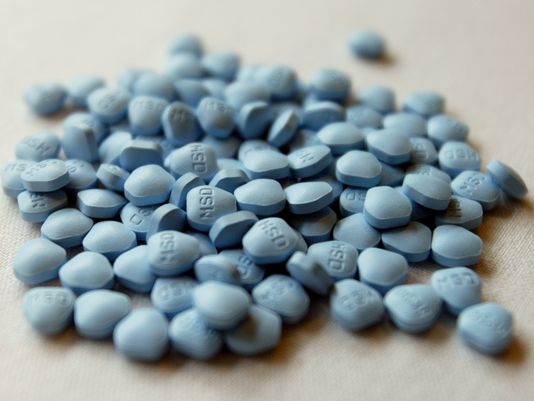Finasteride and Hair Regrowth: Why Aren’t More Men Using it?

During my second year of college I noticed that my hair started to grow back slower when it was cut. I also noticed that my hairline on my upper right and left forehead began to slowly recede, limiting the ways I could style my hair, and making me slightly self-conscious about this change in appearance. I was only 20 years old! I thought I would have at least 10 more years before I started to see the inevitable effects of male-pattern baldness prevalent in both of my parent’s family genes.
One day at the gym a friend suggested that I try out this medication called Finasteride. I was shocked that I had never heard of it before (with my father as a physician and my involvement in the gay community, I thought that I was aware of all the treatments to hair loss). Three years later I am still surprised at how few of my friends are prescribed, or have even heard of this medication and how it can cause hair regrowth.
I hope that I can share this information, a combination of clinical facts and my own personal experience, with you. If you experience male pattern baldness or have a family history of it, I encourage you to speak with your doctor about this treatment option.
Male-pattern baldness
Many of us experience male pattern baldness as we age, exhibiting symptoms that include a receding hairline, hair thinning, and eventual baldness for some individuals. Some of us are comfortable with this process, and many of us even find shaved heads sexy on men who wear it well. Others of us go through a denial process, trying all sorts of topical thickening products, hats, and haircuts that make our hair thinning less obvious.
The fact of the matter is male pattern baldness is primarily the result of our unique genetic predisposition and our natural male sex hormones; there isn’t much control we have over when or if it starts. \There is also one relatively effective method that I believe is not being taken advantage of: Finasteride.
What is Finasteride?
Finasteride was originally developed to shrink the enlarged prostates of adult men who experience Benign Prostatic Hyperplasia (BPH). The medication was found useful especially in reducing the need for surgery, creating better urine flow with less straining, and decreasing nighttime urination. Interestingly enough, one of the major documented side effects that occur in men who take Finasteride is moderate to dramatic hair regrowth (for some men who experience male-pattern baldness).
The normal dosage for an individual who takes Finasteride to treat BPH is one 5mg tablet daily. However, biomedical research has revealed that only 1mg of the active ingredient daily is needed to induce the full hair-regrowth side effects.
Finasteride vs Propecia
Propecia was developed to prevent the conversion of testosterone to dihydrotestosterone (DHT) in the male body (resulting in hair thinning and hair loss for men). This medication was primarily used to treat male pattern baldness and hair reduction, and it was developed by the drug industry to optimize the market of demand for the hair regrowth effects Finasteride has. This is because Finasteride and Propecia contain the same active ingredient.
Finasteride (when used to treat male-pattern baldness) is essentially a generic version of Propecia. Propecia is therefore unsurprisingly more expensive compared to Finasteride.
Costs and Medication Details
Generic Finasteride now comes in the form of both 5mg and 1mg tablets. Some physicians will prescribe the 5mg tablet form to individuals using the medication to treat male pattern baldness, instructing their patients to split each pill into quarters, therefore making each quarter slightly more than 1mg of the active ingredient. This can be beneficial to the patient when a month’s worth (30 days) of these 5mg tablets are prescribed, effectively lasting the patient 120 days. Some patients prefer the 1mg tablet due to the ease of use (they don’t have to split the pill into quarters).
The generic form is extremely inexpensive. For me personally, Finasteride is not covered under my insurance plan because I am not over 40 years of age (most insurance plans set this age limit because younger men typically experience BPH in much lower numbers than older men). Therefore, my out-of-pocket payment is typically $40 for 30 5mg pills. Due to the fact that I am taking only a quarter pill per day, this medication costs me $10 per month, or approximately 33 cents/day. It appears that the 1mg Finasteride cost is slightly higher at approximately $22 per month, or 73 cents/day.
Name brand Propecia (essentially the same as the generic 1mg Finasteride) costs about $70-$75 per month. Although this also isn’t a terrible price, it’s still significantly more than the generic counterpart. I personally use Finasteride instead of Propecia, and I am very satisfied with the effects.
Finasteride Effectiveness
Although various studies have been performed that result in differing answers to the question of effectiveness, an average of 86% of men experience a significant decrease in the production in DHT (the chemical that causes men to lose hair). In other words, approximately 86% of men notice a significant difference in hair, however the actual amount of hair regrowth and thickening varies based on the individual’s internal body chemistry. The American Hair Loss Association actually recommends Finasteride as the first line of defense against male-pattern baldness.
In my own experience I noticed (at first) significant hair regrowth in areas that had been receding. I also noticed a thickening of hair in areas that were slightly thinning, making the appearance on my scalp more even. After the first year of consistently taking this medication the hair regrowth and thickening came to a halt, but I continue to take the medication to maintain the increase of hair I now have.
Possible side effects and cons of Finasteride
The most commonly reported side effect of taking this medication for hair regrowth is decreased sex drive, however it is important to point out that this typically only occurs in 10% of users. The other 90% experience no reduction in sex drive and libido whatsoever, and those who do experience the reduction in sex drive return to normal libido levels when taking the drug is discontinued. Therefore, if you are worried about it having an effect on your sex drive, try it out. If you experience these side effects, stop taking the drug and your drive will return to normal.
Finally, one disadvantage of Finasteride is the fact that it must be taken consistently to be effective, and once an individual starts taking the medication it must be taken indefinitely to continue seeing results. However, many of us are already accustomed to taking a pill everyday (Truvada, our daily multivitamin, etc.), so this should not be a barrier for someone interested in trying this hair regrowth method.
It is also important to point out that not all users experience hair regrowth and maintenance to a desired degree (or sometimes at all). This is unfortunately out of the individual’s control, however there are still other options to combat male-pattern baldness that are worth exploring.
Try using in combination with other topical medications
Just as Truvada is most effective in preventing HIV when used together with condoms, Finasteride can be more effective when used in conjunction with another hair-loss prevention method. One great idea is to combine daily use of Finasteride with daily application of Rogaine (or the generic Minoxidil version). Yes, both have to be used daily to be effective, but if you are in the routine of taking a pill everyday, how much more difficult is it to add on the application of this topical medication?
Reply below with your comments about Finasteride! Let us know how it has worked for you, or if you prefer another method.
